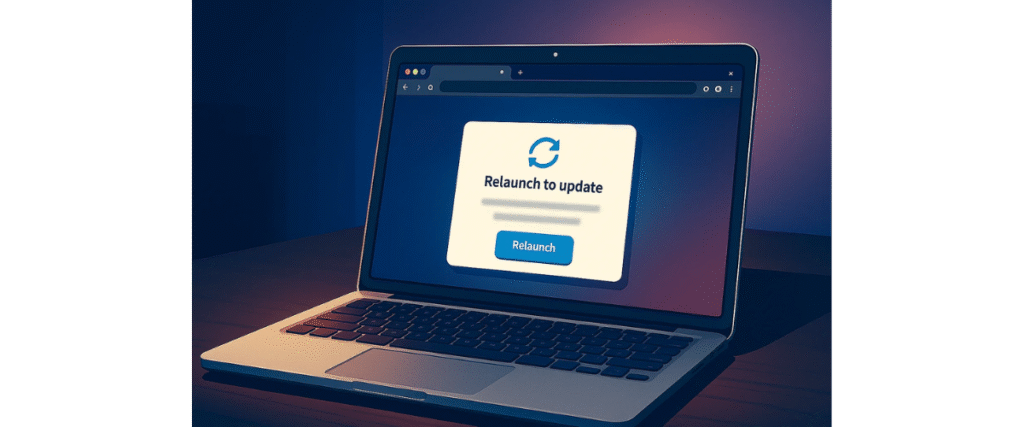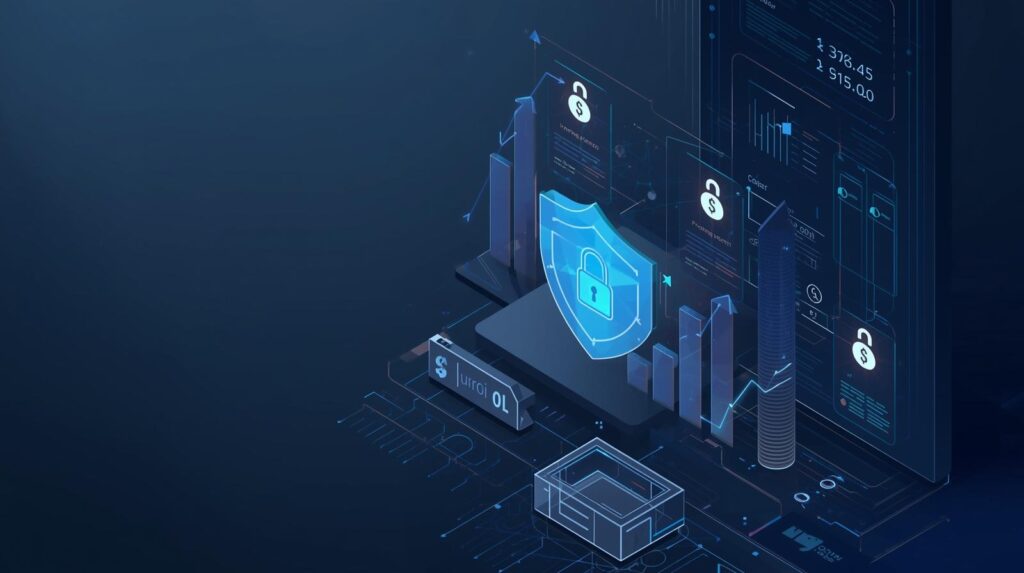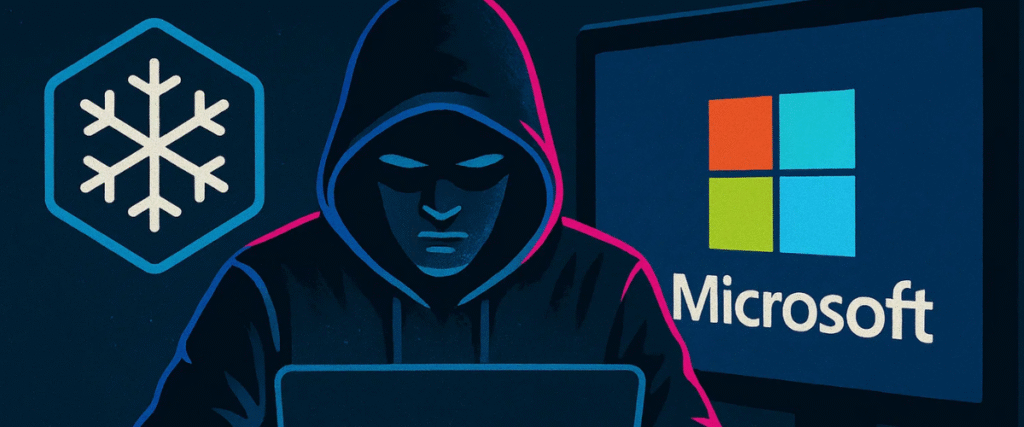Don’t Join That “Renewal” Meeting
Calendar invites can phish. Stop credential theft before it starts.
The Calendar Invite You Weren’t Expecting
Cyber attackers follow attention, and few things command attention like a meeting reminder from Microsoft 365. Over the past year, we’ve observed a sharp rise in calendar‑based phishing that masquerades as urgent Microsoft 365 renewal notifications. The lure is simple: a meeting invite claiming your subscription will be suspended unless you “join” or “resolve” the issue immediately. Because calendar invites feel routine and trustworthy, users click quickly. That speed is what the attacker is buying.
This article explains how the attack works, the red flags to watch for, the business impact if a user falls for it, and the precise controls Canadian SMBs can implement today. It’s written for leaders who need clarity, not jargon, and for IT teams that want practical steps that actually reduce risk.
How the Scam Works
The attacker crafts a meeting invitation that looks like it’s from Microsoft 365 Renewals or a similar billing desk. The subject line often reads: “Subscription services will be discontinued effective Fri, 30 May 2025.” Inside, the language is corporate and calm, the branding looks familiar, and the call‑to‑action buttons—Join, Review, Resolve—are polished. The link behind those buttons does the damage.
Two things typically happen after a click:
- Credential harvesting. The user lands on a pixel‑perfect Microsoft sign‑in copy. Entering credentials hands the attacker a working username and password. Within minutes, rules can be added to the mailbox to hide security alerts or forward invoices. That’s the start of business email compromise (BEC).
- Malware delivery. The user is served a malicious file (frequently .HTM/.HTML, .ZIP, .ISO, or .LNK) or a chain that fires a remote access trojan (RAT). Once the endpoint is controlled, ransomware, data theft, and lateral movement are a few clicks away.
The invite often arrives as a calendar event rather than a regular email. Clicking Accept, Decline, or Tentative can confirm to the attacker that the mailbox is live and monitored, encouraging additional attempts.
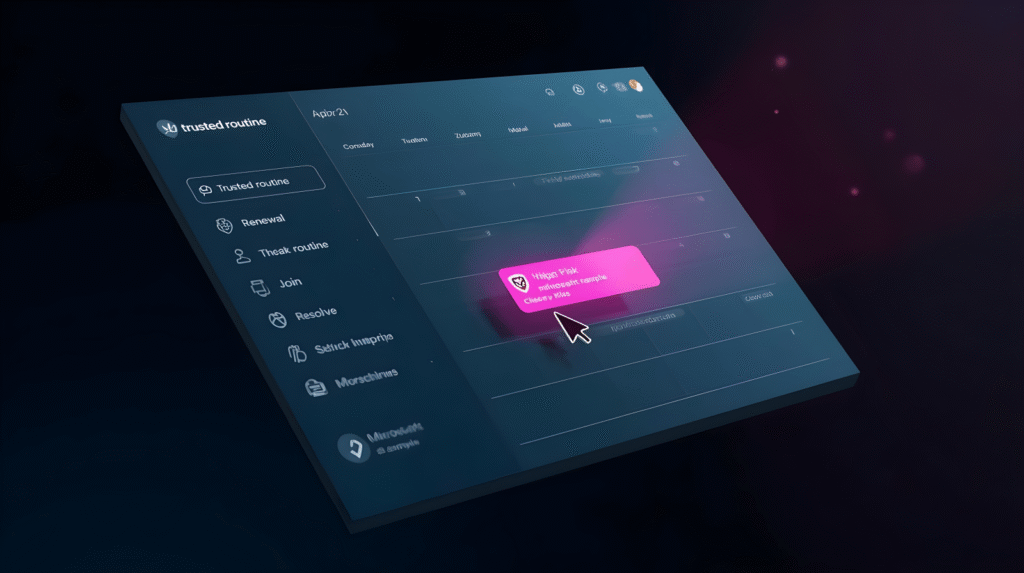
Why Calendar Invites Bypass Defences
Calendar invites live in a grey zone. Users treat them as logistics, not security risks. Many tenants extend advanced inspection to email but forget to turn on protections that also cover calendar items and links inside meeting descriptions. Add a billing deadline and a familiar brand, and you’ve got the perfect recipe for a hasty click. The trust is unearned, and attackers know it.
Beyond user behaviour, technical gaps help them. Some environments don’t apply Safe Links to meeting bodies, so URLs aren’t rewritten or blocked at click time. Others allow legacy authentication, which weakens MFA and lets a single phish succeed. Meeting reminders also create timing pressure—alerts pop up seconds before another call, nudging people to “resolve it now.”
Finally, attackers exploit look-alike domains and neutral corporate language that blend into daily noise. The result: fewer sceptical eyes, fewer automated checks, and a higher chance a malicious invite reaches—and convinces—its target.
Red Flags Your Team Should Recognize
- Urgent language tied to billing, subscription renewal, or service suspension—especially with dates or countdowns.
- Sender or organizer names like Microsoft 365 Renewals that don’t match your known billing workflow or vendor contacts.
- Shortened, generic, or mismatched URLs when hovering over Join/Resolve buttons; links that don’t point to Microsoft domains.
- Attachments you wouldn’t expect in a meeting invite: .ZIP, .ISO, .LNK, or .HTM/HTML files, or password-protected archives.
- A “case number” or “ticket ID” designed to signal legitimacy—but unrecognizable to your team or ticketing system.
- External organizers using look-alike domains (e.g.,
micros0ft.com) or newly registered domains with no history. - Invites sent to distribution lists or multiple departments unrelated to renewals.
- Language that discourages verification (“reply only to this invite,” “do not contact support”).
If you train only one behaviour: never resolve billing from a meeting link. Navigate to the official portal directly, or contact your IT/finance lead using a known, separate channel.
Business Impact When a Single User Clicks
A single compromised mailbox can alter invoices, intercept payments, and expose customer data. Finance teams are targeted because changing banking details requires only a believable email thread. Malware escalates the impact further: stolen session tokens enable lateral movement, ransomware halts operations, and restoration grinds teams for days. Insurance claims can get complicated if controls like MFA, EDR, and tested backups weren’t in place or weren’t enforced consistently.
Ripple effects follow quickly. Compromised email can be used to impersonate executives, authorize fraudulent purchases, or approve “urgent” vendor changes. Customers may receive malicious messages from your domain, eroding trust and forcing public communication. Legal and privacy reviews pull leaders off core work. Revenue slips as sales pause to reassure accounts and re-issue paperwork.
Meanwhile, IT burns cycles on containment, forensics, and rebuilds. Even without data loss, the opportunity cost is real: delayed projects, overtime, staff fatigue, and a wary culture that clicks less and hesitates more. One click can become weeks of distraction and a measurable hit to cash flow and reputation.
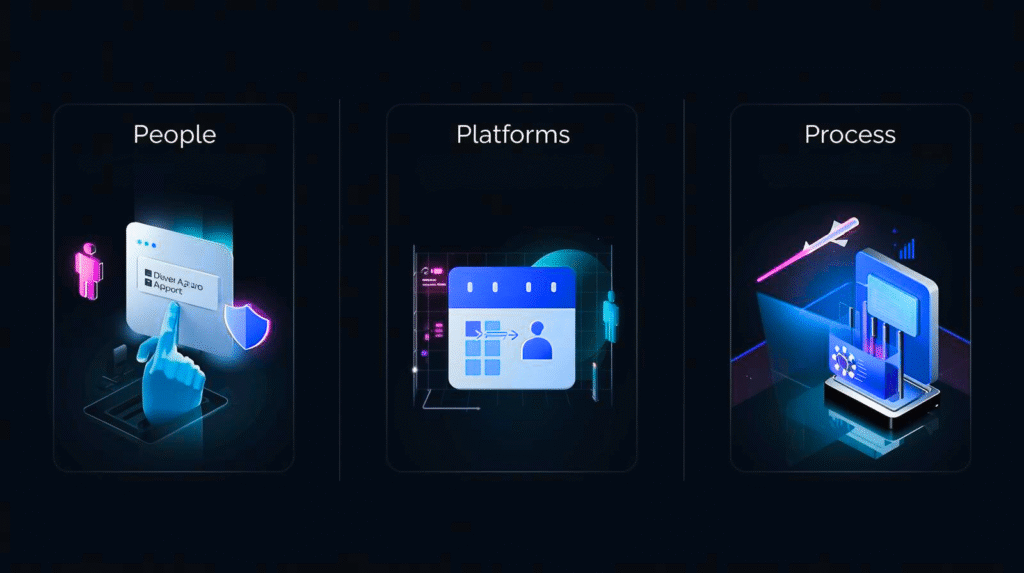
Prevention: People, Platform, and Process
Security is a stack. To shut down calendar‑based renewal scams, combine user awareness, Microsoft 365 policy hardening, endpoint protection, and crisp response mechanics. The steps below can be implemented by most SMBs in days or weeks—not months.
1) Awareness that Changes Behaviour
- Teach staff that calendar invites can phish. Treat invites like any email from an unknown or external sender.
- Ban the habit of fixing billing or renewal issues via meeting links. Direct users to account.microsoft.com or your MSP/MSSP portal.
- Encourage screenshots of suspicious invites sent to IT instead of clicking Accept/Decline.
- Make reporting easy. Deploy the Report Phishing add‑in and show people how to use it.
Give finance, executive assistants, and executives extra attention. They handle payments, vendors, and high‑value data. Attackers know who approves wires.
2) Microsoft 365: Email and Calendar Protection
- Turn on Microsoft Defender for Office 365 (Plan 2) or equivalent, and ensure the scope includes calendar items and collaboration apps.
- Enable Safe Links with time‑of‑click protection for Outlook, Teams, and Office web apps. Ensure it rewrites links inside meeting bodies.
- Enable Safe Attachments with Dynamic Delivery so productivity continues while files are detonated in the background.
- Configure high‑confidence phishing actions that quarantine questionable invites and retroactively purge malicious items using ZAP.
- Confirm your configuration can hard‑delete malicious invites and associated calendar entries across the tenant during incident response.
3) Strong Identity Posture
- Enforce MFA for everyone—users, execs, admins, and service accounts. Use number matching or modern phishing‑resistant methods where possible.
- Block legacy/basic authentication. Basic auth undermines MFA and is a common backdoor.
- Apply Conditional Access to require compliant devices and MFA for risky sign‑ins, block anonymous/TOR IPs and high‑risk geographies, and restrict OAuth consent to admin‑approved apps.
4) Endpoint Security That Stops Payloads
- Deploy EDR/XDR on Windows, macOS, and Linux. Ensure you can isolate devices quickly on high‑severity alerts.
- Enable Attack Surface Reduction (ASR) rules to prevent Office from creating child processes, to block executable content from email and web clients, and to constrain script‑based attacks.
- Use application control (e.g., WDAC) for high‑risk users such as finance or admin roles. Limit unsigned or unknown binaries.
- Keep PowerShell in Constrained Language Mode where feasible; log Script Block activity for investigations.
5) Hardening Microsoft 365 for Calendar‑Phish
- Add transport rules that banner or hold external invites containing renewal and billing keywords. Route suspicious copies to a review mailbox.
- Maintain a Tenant Allow/Block List (TABL) for known malicious senders and domains; monitor for look‑alike domains impersonating Microsoft.
- Tighten anti‑phishing settings to protect VIPs and exec assistants; stop domain and user impersonation.
- Turn on mailbox auditing and block external auto‑forwarding.
- Regularly inspect for inbox rules that hide or forward finance‑related messages. After any incident, recheck delegates and forwarding addresses.
6) Detection and Monitoring
- Watch for user reports of invites with renewal, subscription, suspend, or billing in the subject or body.
- Monitor Safe Links events for blocks or verdict changes tied to invites. Investigate any time‑of‑click denials.
- Investigate abnormal sign‑ins (impossible travel, unfamiliar ISPs) shortly after users interact with suspect invites.
- Hunt for mailbox tampering: new inbox rules, new forwarding SMTP addresses, or altered auto‑replies.
- Correlate endpoint signals: browser spawning mshta, rundll32, or unexpected script interpreters soon after a calendar reminder.
Incident Response: What to Do When Someone Clicks
Speed is everything. Your response should be written, tested, and understood by the people who will execute it.
Triage (first 15 minutes). Validate the sender domain and message headers. Detonate links and files. If indicators are strong, escalate without debate. Communicate with the reporting user and their manager: you’re on it, here’s what to expect, don’t touch the device.
Containment (15–45 minutes). Revoke the user’s session tokens in Entra ID. Reset the password and force MFA re‑registration if there’s any doubt. Hard‑delete the malicious invite across the tenant so it disappears from calendars. If the endpoint shows suspicious activity, isolate it with EDR and capture a memory/triage package.
Eradication (45–120 minutes). Remove malicious inbox rules and unexpected delegates. Hunt for new OAuth consents or rogue app registrations. Check OneDrive/SharePoint for mass rename/encryption behaviours. Quarantine any artifacts found by EDR and confirm C2 indicators are blocked.
Recovery (2–24 hours). Restore access with least privilege. Monitor the account and device closely for re‑infection. Brief stakeholders—leadership, finance, and customer‑facing teams—on what happened and what controls were improved.
Lessons learned (within 5 business days). Update detections and banners. Add a redacted screenshot of the real lure to your awareness library. Capture metrics: time to triage, time to contain, and the number of similar invites blocked since.
Canadian Compliance and Communication
If personal information may have been exposed (client names, emails, invoices), you may have obligations under PIPEDA or provincial privacy laws. Build a simple decision tree into your playbook so privacy assessment starts during containment—not after the dust settles. Keep a breach record, communicate facts you can verify, and give affected parties practical help such as password reset guidance or MFA setup. Maintain a single point of contact for inquiries and track every decision and timestamp.
This section is not legal advice. Coordinate with counsel to ensure requirements are met for your jurisdiction and sector.
Real‑World Scenario: The Friday Invite
Late on a Friday, a finance coordinator accepts an invite from “Microsoft 365 Renewals.” The Resolve button opens a fake sign‑in. Basic authentication is still allowed for this user, so no MFA prompt appears. Minutes later, a mailbox rule quietly moves any message with “invoice” in the subject into an RSS folder. On Monday morning, a vendor receives a request to change banking details.
Accounts Payable raises a flag, the SOC investigates, tokens are revoked, the malicious invite is removed from calendars tenant‑wide, and the device is isolated after EDR spots a mshta.exe launch at the time of the click. No money is lost. The company tightens Safe Links coverage for meetings, blocks basic auth, and runs a finance‑specific awareness session.
The lesson is simple: the gap wasn’t a missing product—it was a missing configuration and a habit of trusting calendar invites.

Metrics That Prove Progress
Leaders need evidence that the program is working. Track:
- The rate of user reports for suspicious calendar invites (aim upward—awareness is working).
- Time to triage from report to SOC review (target 15 minutes or less).
- Time to contain from first alert to token revocation/device isolation (target under 90 minutes).
- Phish click rate in renewal‑style simulations (drive it toward five per cent or lower).
- MFA coverage and compliant device percentage (strive for 100%).
- Quarterly backup restores completed successfully (target 100%).
These are small numbers to measure, but they tell a big story to customers, auditors, and insurers.
Common Pitfalls to Avoid
- Relying on MFA alone. MFA curbs account takeover, but it won’t stop malware or session token theft. Keep EDR and ASR controls tight.
- Thinking banners are enough. Banners are reminders, not shields. You still need detonation and retroactive purge.
- Exempting executives. VIPs attract attackers. Apply stricter protections, not exceptions.
- Unpractised playbooks. A plan that nobody has rehearsed is a plan that will fail. Tabletop it quarterly.
- Forgetting collaboration apps. Ensure protections extend beyond email to Teams and calendar items.
What Good Looks Like in Practice
In a mature setup, calendar invites are treated with the same caution as emails. Safe Links rewrites and checks links at click time—inside the invite, not just the email body. Safe Attachments detonates files while users keep working. MFA and Conditional Access stop risky sign‑ins. EDR blocks payloads and isolates devices quickly. Transport rules warn on renewal/billing language. The SOC watches for new inbox rules and OAuth consents. Most importantly, employees see a suspicious invite and know exactly what to do: report, don’t click.
That combination—awareness, tuned controls, and practised response—shuts down the renewal‑invite play in real life.
Final thoughts
Calendar-based phishing works because it hijacks habits. People treat invitations as logistics, not risk, and the “Microsoft 365 renewal” lure adds just enough urgency to override judgement. The countermeasure isn’t a shiny new tool; it’s disciplined basics executed well. Train everyone—especially finance, executive assistants, and leaders—to treat calendar invites like email and to resolve billing only through known portals. Extend Safe Links and Safe Attachments to meetings, enable detonation for links and files in invites, and ensure you can retroactively purge malicious events from calendars tenant-wide.
Pair that with strong identity (MFA everywhere, Conditional Access, blocked legacy auth) and endpoints that can stop payloads and isolate quickly. Then practise your response: token revocation, hard delete of invites, device isolation, mailbox rule checks, and clear communications. Measure what matters—reporting rates, time to triage, time to contain, and restore success. Do these things consistently and the “renewal” tactic becomes noise, not crisis.
You’ll protect cashflow, customer trust, and team focus—while proving to insurers and auditors that your controls work in the real world. The calendar will go back to doing what it should: keeping your business on time, not putting it at risk.
Featured links:
Security Awareness Training Guide
Security Operations Center (SOC)
FAQ:
Are calendar invites really scanned like email?
Often not by default. Many tenants protect email but forget to extend Safe Links/Attachments to meeting bodies. Enable those policies for Outlook, Teams, and Office apps so links/files in invites are detonated and blocked.
If an employee clicked “Join,” what’s first?
Revoke sessions in Entra ID, force a password reset and MFA re-registration, then hard-delete the invite from all calendars. If anything executed, EDR-isolate the device and hunt for inbox rules and suspicious OAuth consents.
What’s the quickest user rule to teach?
Never resolve billing or renewals from a meeting link. Go directly to the official Microsoft account portal or your MSP/MSSP portal. Report the invite using the Report Phishing button instead of accepting or declining.
Do Canadian SMBs need to notify breaches?
If personal information was exposed and there’s a real risk of significant harm, you must keep breach records and may need to notify affected individuals and the OPC under PIPEDA/provincial rules. Build this into your IR playbook.
PROBLEM
Fake Microsoft 365 “renewal” invites trick users via trusted calendars.
IMPACT
Credential theft, BEC, malware/ransomware, costly downtime, and compliance exposure.
SITUATION
Train users; extend Safe Links/Attachments to meetings; enforce MFA/Conditional Access; deploy EDR; add transport rules; practise rapid containment and hard-delete of calendar items.
CONSEQUENCE
Without these basics, a single click can cascade into fraud, public incident response, and weeks of disruption—far exceeding the cost of tuning controls upfront.
Our Cybersecurity Guarantee
“At Fusion Cyber Group, we align our interests with yours.“
Unlike many providers who profit from lengthy, expensive breach clean-ups, our goal is simple: stop threats before they start and stand with you if one ever gets through.
That’s why we offer a cybersecurity guarantee: in the very unlikely event that a breach gets through our multi-layered, 24/7 monitored defenses, we will handle all:
threat containment,
incident response,
remediation,
eradication,
and business recovery—at no cost to you.
Ready to strengthen your cybersecurity defenses? Contact us today for your FREE network assessment and take the first step towards safeguarding your business from cyber threats!















